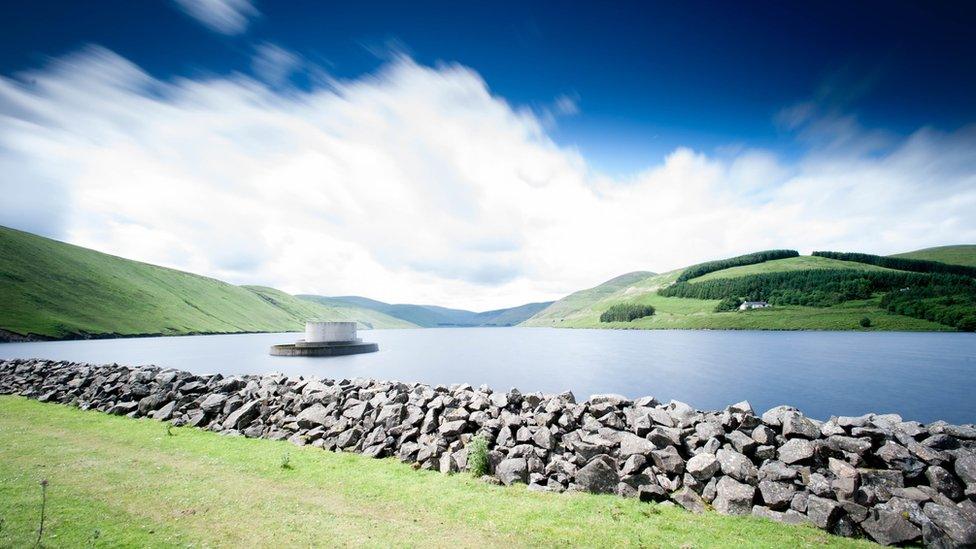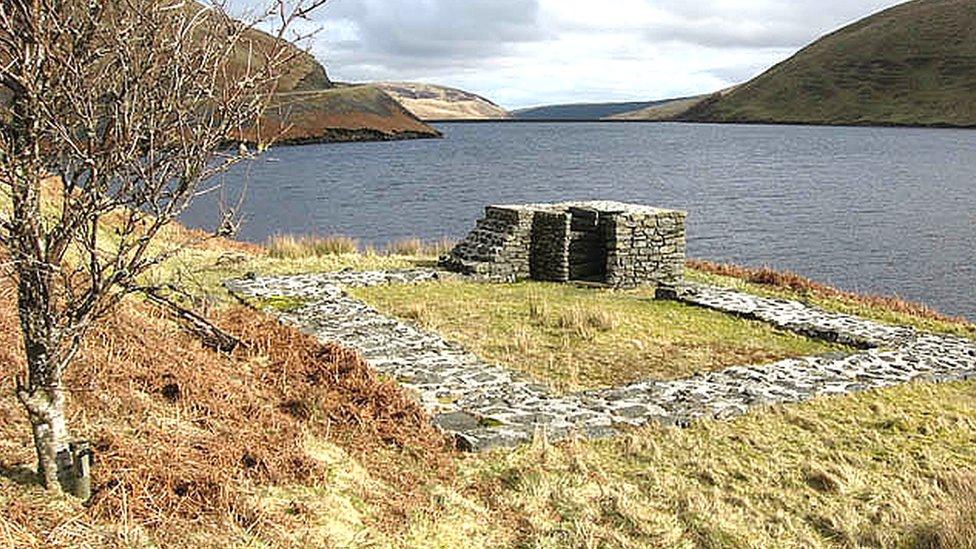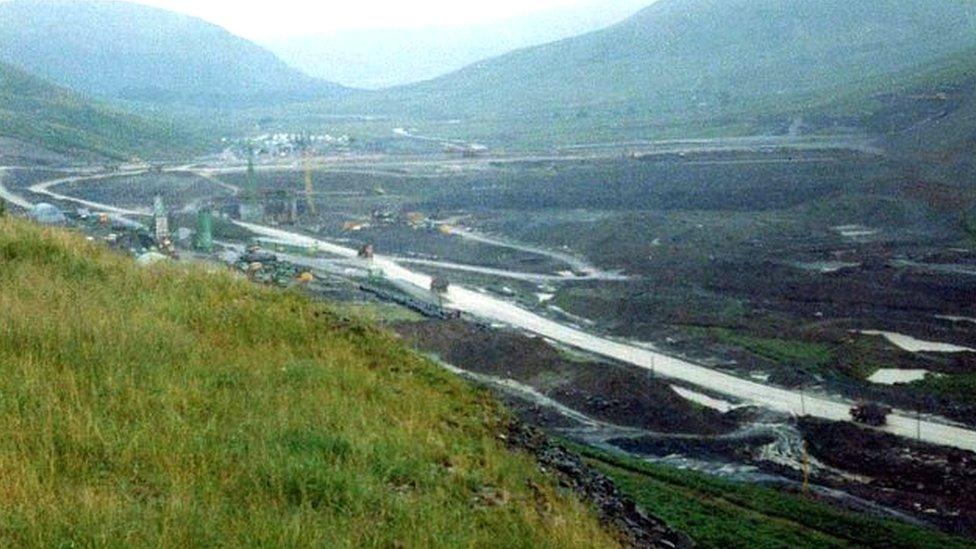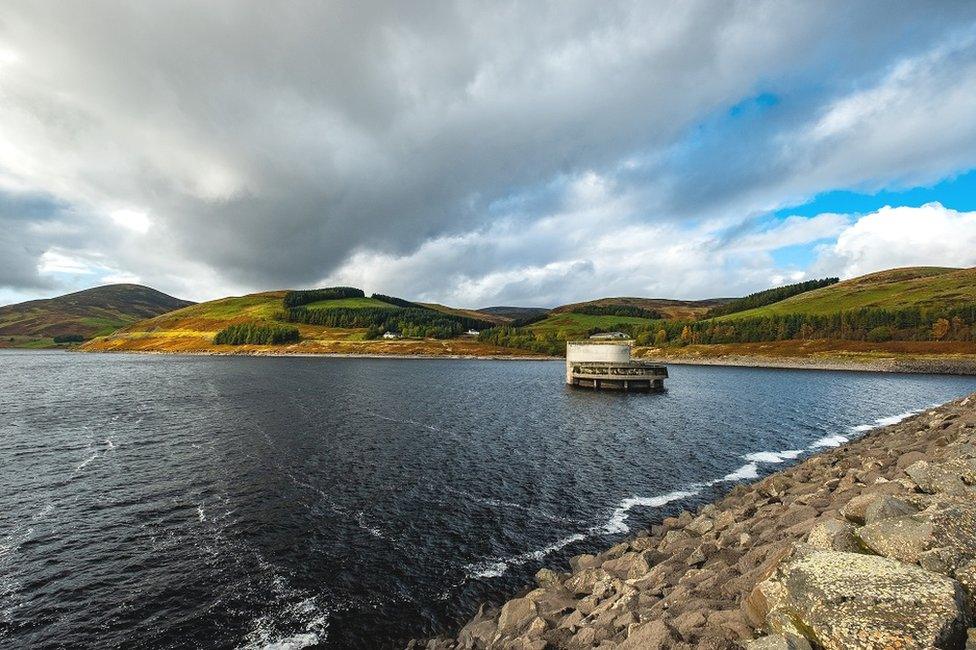Megget Reservoir: The valley quenching Edinburgh's thirst
- Published

Scottish Water said it was proud to look after the 40-year-old reservoir
The Megget Valley was once described as one of the most "inhospitable and bleak" spots in the Borders.
And yet, for four decades, people in Edinburgh - nearly 30 miles (50km) away - have been raising a glass in its honour.
On 30 September 1983, the Megget Reservoir was officially opened, supplying millions of gallons of water to Scotland's thirsty capital.
It was, at the time, the biggest dam in the country.

It was not the first time that Edinburgh had turned to the Borders in its search for water supplies.
In 1905, the Talla Reservoir was officially opened and the small Fruid Reservoir also saw a dam built in the 1960s.
The search for another valley in the area which could be flooded eventually fell upon Megget in the mid-1970s.
Its one-teacher school had shut in 1967 and it was home to shepherds and farmers who had worked the area for generations.

Scottish Water says Megget is the largest earth embankment dam in the UK
They were to be moved on as work began on a massive construction project in 1977 that would take six years to complete.
A new road had to be built as the old one lay below what would become the reservoir floor.
Hundreds of thousands of tonnes of rock were removed to allow the water to get from the area to Edinburgh.
And the site of the historic Cramalt Tower - used by James V of Scotland and Mary Queen of Scots while hunting in the area - was submerged.

Part of Cramalt Tower was reconstructed on the banks of the reservoir
Its foundations were reconstructed near the shoreline of the reservoir.
After a "few hiccups" along the way - as with most major construction schemes - the valley was flooded and the reservoir came online in 1983.
It collects water from the Tweedsmuir Hills which is taken 28 miles via underground tunnels and pipelines to Edinburgh.
Water is routed through Manor Valley and the Meldon Hills to Gladhouse Reservoir and Glencorse Reservoir in the Pentland Hills.

The work to build the facility took several years to complete

The area was home to shepherds for generations before the valley was flooded
These two reservoirs store the water until it is needed when it is transported to the state-of-the-art Glencorse Water Treatment Works (WTW) before heading to customers in the capital.
"It supplies around 87 million litres of water to Edinburgh every day," explained Peter Farrer, chief operating officer at Scottish Water.
"Excess water which overflows from the reservoir is returned to the Megget Water which drains into St Mary's Loch, which in turn feeds the River Tweed."
Scottish Water said that the dam holds 64 billion litres of fresh water - the average bath uses about 180 litres - and at 55m high (180ft) it remains the highest earth embankment dam in the UK.

The reservoir holds billions of litres of fresh water
Mr Farrer said: "Megget Reservoir has a fascinating history.
"The valley where it was built was used as royal hunting ground by David I of Scotland, two defensive towers were built in the 15th Century, gold mining occurred in the 16th Century before it was used for sheep farming ahead of the dam being built.
"Being the largest earth embankment dam in the UK the logistics of building this man-made water supply in the middle of 400-metre high hills must have caused a few headaches."
He said it remained a "magnificent design engineering masterpiece".

A series of pipes and tunnels takes the water to Edinburgh nearly 30 miles away
"Opened in 1983, it was a major milestone in the supply of water to Edinburgh via an intricate network of underground pipes and tunnels," he said.
"Today it still supplies more than a third of the capital's drinking water supply as well as the Peebles area in the Borders and also connects to the Midlothian supply via Gladhouse reservoir, for extra water resilience.
"Scottish Water is proud to be custodians of this amazing asset which in 40 years has become part of the natural landscapes of this area of the Scottish Borders."
All images are copyrighted.